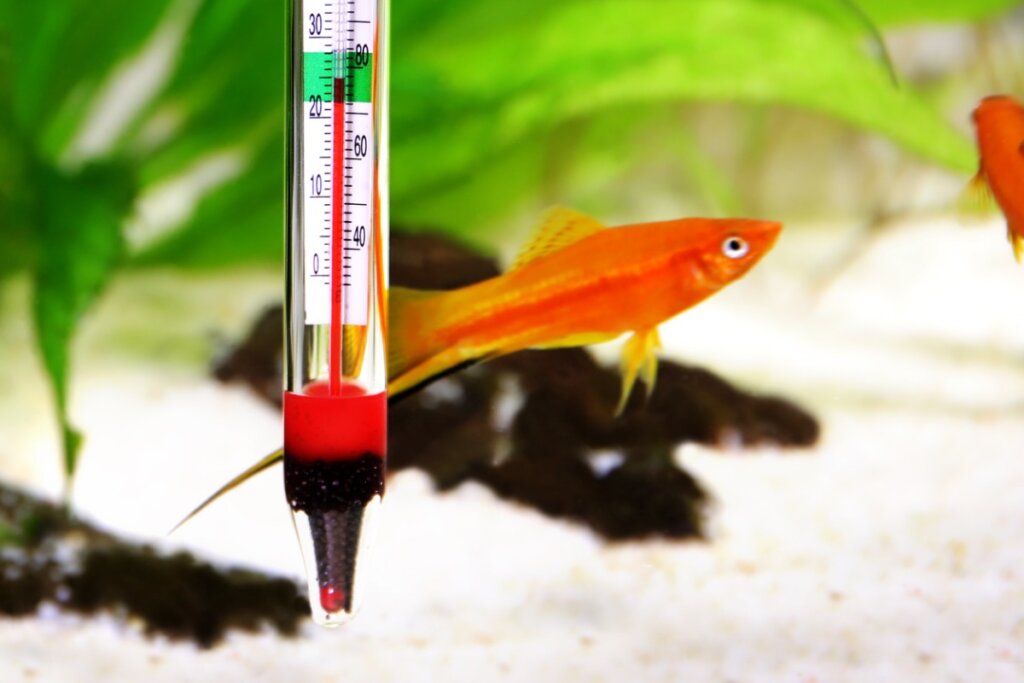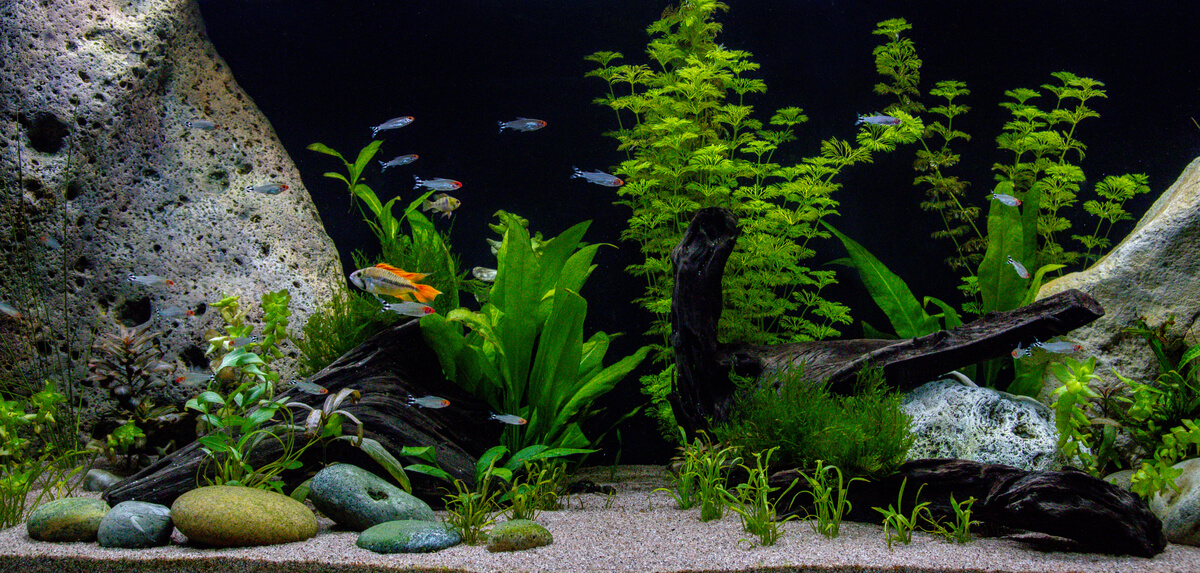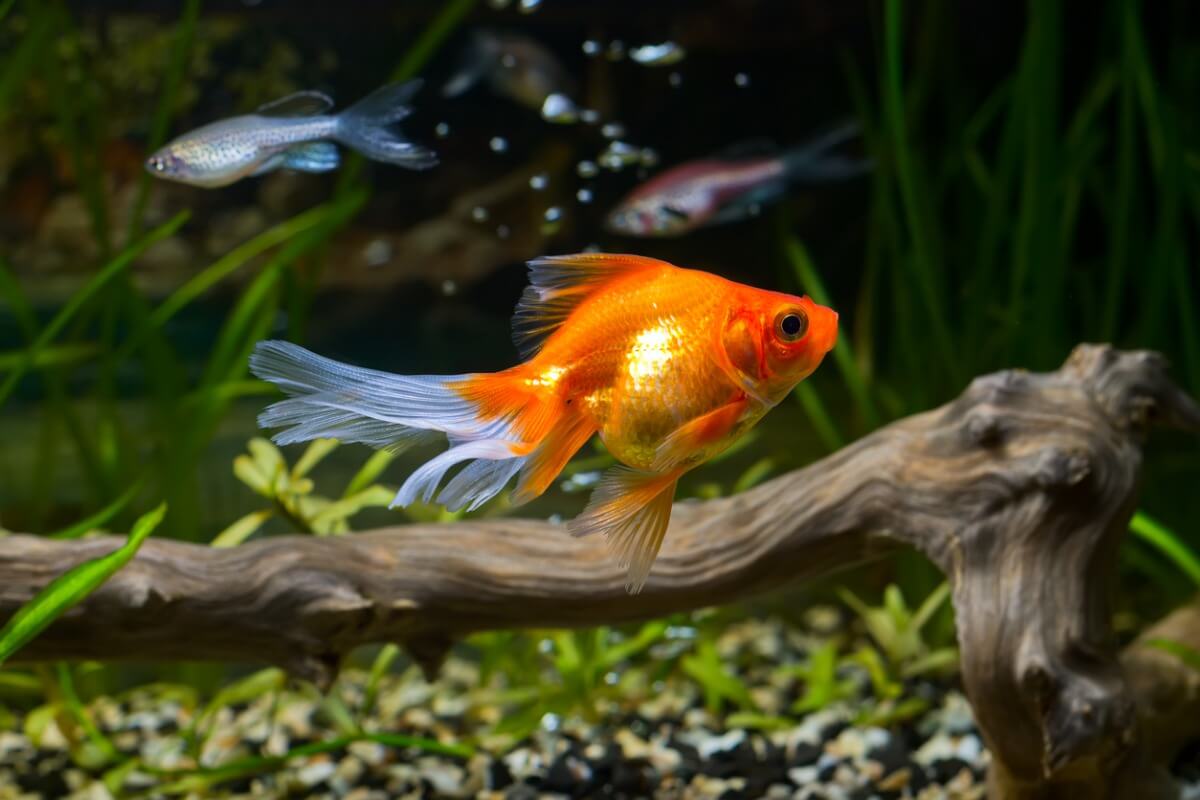What's the Ideal Temperature of a Freshwater Aquarium?

Keeping a fish tank at home is very demanding, but all the effort is worth it. Watching the fish swim in harmony in the pristine water mesmerizes anyone, but to get to this point takes work and knowledge. For example, being clear about the ideal temperature of a freshwater aquarium is essential for the fish to be able to live in it in the long term.
Although this value may remain relatively constant throughout the year, it should be noted that some species require more heat than others and that, depending on the year, some fish need temperature increases (or decreases) in order to reproduce. If you want to know more about this subject, we encourage you to keep reading.
What’s the ideal temperature of a freshwater aquarium?
First of all, it’s necessary to emphasize that here we’re going to focus our attention on freshwater aquariums, because saltwater tanks require very different conditions and should always be at lower temperatures. In the world of non-marine fish tanks, it’s often said that there are cold-water fish and warm-water fish.
Although this term doesn’t say much about each species, it does serve to establish a number of generalities. For example, all warm water (or tropical) fishes live in aquatic environments with temperatures above 20 °C (68 °F). Examples in this group are guppies, platys, discus fish, or zebrafish.
In contrast, fish that thrive best between 10 and 20 °C are considered cold-water fish. There are very few domestic representatives in this block, but the most famous is undoubtedly the goldfish (Carassius auratus). Although goldfish can withstand temperatures well above these, they thrive best in temperate environments.
Finally, polar fish are those that thrive in waters between 0 and 10 °C. For logistical reasons, almost no guardians keep specimens of this group in their homes. The vast majority of freshwater species are considered tropical or warm water species (with the exception of goldfish).

So what’s the ideal temperature of a freshwater aquarium?
Each species has a specific temperature range, but some generalities can be established for first-time keepers. As professional websites indicate, almost all tropical fish are comfortable at the exact temperature of 25 °C (77 F) (which can fluctuate sporadically between 24 and 27 °C – 75 to 80 Fahrenheit).
To maintain this constant temperature you should get a specific aquarium heater (with sufficient power for your specific tank). Set it to the desired limit (usually 25-26°C) and place it in the water. Don’t worry, it will turn off when the water warms up to the desired temperature.
You can also get a thermometer that will tell you the temperature of the water at all times, as the heater may turn off accidentally, break or not be able to control the temperature range.
Things change a little if you have cold-water fish (such as goldfish). The ideal temperature for this species is between 15 and 18°C (59 to 64 F), so there’s no need for a heater. On the other hand, in certain months of the year, it’s sometimes recommended to install surface fans to lower the temperature of the water in the tank (by evaporation).
These rules don’t apply if you want to keep fish of a specific species. For example, many tropical fish require an occasional rise in temperature to enter the reproductive phase, but others need a small drop in temperature. Be well informed before making any such changes to your tank.
Conditions that can change the water in your aquarium
Now you know that the ideal temperature for a tropical aquarium is 25°C (77 F), while a cold water aquarium will be best kept between 18 and 20°C (64 to 68 F). However, certain changes can sporadically alter the microclimate of the aquarium, and these can seriously affect its members.
In the following list, we’ll show you situations that can cause the temperature of the tank to oscillate dangerously:
- Location of the tank: A tank located in front of a window can experience a dramatic temperature increase if the sun’s rays fall directly on it. On the other hand, at night, there’ll be sharp drops in temperature (especially in winter).
- Lighting: Small fish tanks with inadequate lighting can become very hot in a matter of hours.
- Drastic water changes: Water from a tap or bottle is always colder than water from a heated aquarium. If you make very drastic changes (50% of the tank volume or more) you’re likely to disrupt the ecosystem.
- Faulty heater: A disconnected heater during the coldest month of winter can be devastating. Therefore, it’s essential to monitor the tank temperature with an accessory thermometer at all times.
Beyond these external agents, it should be noted that all fish require a constant thermal range to be well. Fluctuations can result in stress and the death of the fish, so choose the location of your aquarium carefully before setting it up.

Achieving the ideal temperature of a freshwater aquarium is easier than it seems. The most important thing is to choose a part of the house with little temperature changes for your tank and, from then on, the heater will do the rest of the work. Of course, you should monitor it and check its temperature every day. This is the only way to prevent a sporadic mishap from escalating.
All cited sources were thoroughly reviewed by our team to ensure their quality, reliability, currency, and validity. The bibliography of this article was considered reliable and of academic or scientific accuracy.
- What temperature should a tropical aquarium be?, Swell UK. Recogido a 29 de septiembre en https://www.swelluk.com/blog/what-temperature-should-a-tropical-aquarium-be/
- Correct Aquarium Water Temperature, The Spruce Pets. Recogido a 29 de septiembre en https://www.thesprucepets.com/aquarium-water-temperature-1381896
